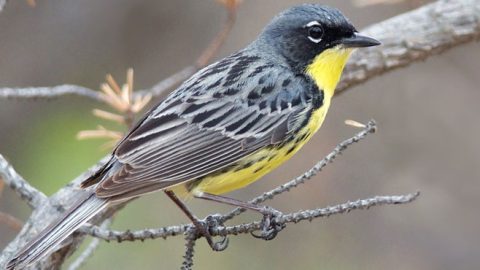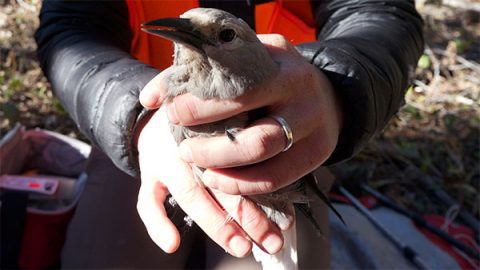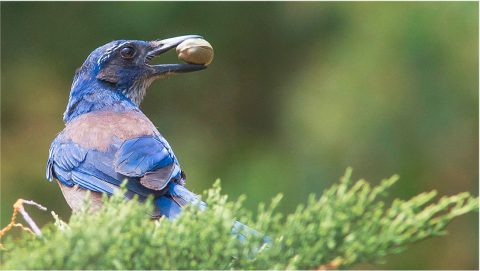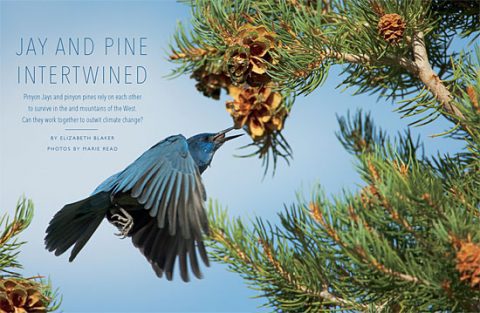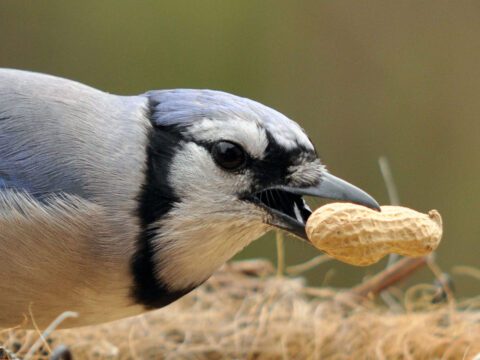Analysis: The Economic Value of Birds
By Çağan H. Şekercioğlu
The U.S. Air Force has used Peregrine Falcons to drive away European Starlings and other birds that pose threats to aircraft at air bases. Photo by Nick Dunlop. June 12, 2017From the Summer 2017 issue of Living Bird magazine. Subscribe now.
For ornithologists, bird watchers, and many people who enjoy birds, the idea of calculating the economic value of birds as pest-control agents, pollinators, carcass cleaners, and various other ecosystem service providers may be off-putting. I still feel offended when anyone asks me: “Why should we care about birds?”
As director of an environmental organization, I have to answer that question regularly, for everyone from impoverished villagers to Turkey’s president. My instinctive response is: “Because they exist, and it is immoral to kill other creatures and destroy their habitats.”
However, this reply is rarely convincing. On the other hand, talking about the ecological and economic benefits of birds raises peoples’ interest and support for bird conservation.
As ornithologist Matt Johnson puts it elegantly: “The fact that you pay a plumber for his services does not diminish his personal value as a father, friend, or human being.
Knowing that healthy vulture populations can save human lives by reducing the incidence of rabies does not make them any less magnificent. But it’s the increases in rabies deaths in some areas that have prompted interest in vulture conservation among people I have talked to, from garbage men in Turkey to government officials in Ethiopia.
With birds’ ecological roles and their economic consequences in mind, I—along with my co-editors, visiting professor Chris Whelan of the University of Illinois at Chicago and biologist Dan Wenny of San Francisco Bay Bird Observatory—recently published the book Why Birds Matter.
The book provides an overview of birds’ ecological functions and ecosystem services, which typically fall into one of four categories:
- Provisioning services, such as game meat for food, down for garments, and guano for fertilizer;
- Regulating services, such as scavenging carcasses and waste, controlling populations of invertebrate and vertebrate pests, pollinating plants, and dispersing seeds;
- Supporting services, such as cycling nutrients, and even contributing to soil formation; and,
- Cultural services, exemplified by birds’ prominent roles in art and religion and by the billions of dollars spent on bird watching.
Since much has been written, by myself and others, about the economic importance of bird watching and hunting, I am going to focus on a few of the other services provided by birds with some economic examples from our book. Only a small fraction of bird ecosystem services have been evaluated economically, but even these few examples show how birds are critical for the healthy functioning of ecosystems and contribute billions of dollars to the world’s GDP.
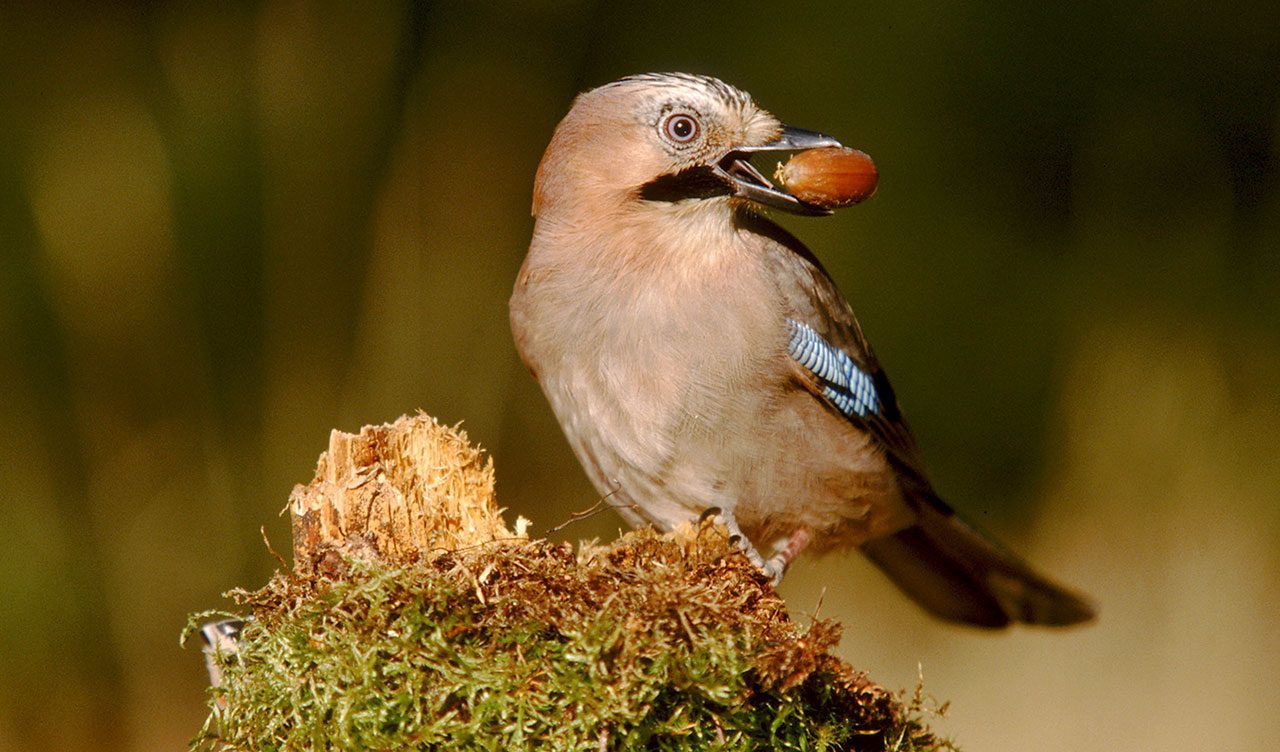
Seed Dispersal and Pollination
Seed dispersal may be the most important bird ecological function. In some tropical forests, birds disperse up to 92 percent of all tree and woody species, including 85 timber species, 182 genera of edible plants (including spices), 153 medicinal plants, 146 ornamental plants, and 84 genera with other economic or cultural uses.
Find out More: Birds and Seed Dispersal
Some important tree species, such as African mahoganies (Meliaceae), depend on a few specialized avian dispersers. The disappearance of large frugivorous birds such as hornbills and curassows is economically detrimental because many bird-dispersed timber tree species, such as Antiaris toxicaria in Ghana, have very large seeds and only large birds can disperse the seeds. Indeed, two valuable African mahogany species, Entandrophragma utile and Khaya anthotheca, rely almost entirely on birds for seed dispersal.
Even though there are far fewer bird-dispersed plants in temperate regions, birds’ economic value there can still be substantial. In Sweden’s Stockholm National Urban Park, the human labor cost of replacing the seeding or planting of tree seeds by Eurasian Jays was estimated to be $2,450 to $11,250 per bird and $210,000 to $950,000 across the park. According to Diana Tomback, a professor of forest ecology at the University of Colorado at Denver, the estimated cost of replacing Clark’s Nutcrackers’ seed dispersal of whitebark pine is $1,980 to $2,405 per hectare and $11.4 to $13.9 billion across the range of whitebark pines in the U.S.
Though bird pollination is less common than seed dispersal, it is important in certain regions, such as Australia, Oceania, and Andean cloud forests, and for certain plant groups, such as tropical understory herbs. Despite limited research, birds are thought to pollinate between 3 and 5 percent of more than 1,500 species of crop or medicinal plants, three-quarters of which cannot self-pollinate. Studies on commercial plants—such as Eucalyptus, feijoa, loquat, silky oak, and red silk cotton tree—indicate that birds may be providing higher-quality pollination of mixed-mating tree crops than insects, such as honeybees. As shown by the ecologist Sandra Anderson of the University of Auckland and coauthors in our book, bird pollination has been overlooked, especially in winter when most insects are inactive.
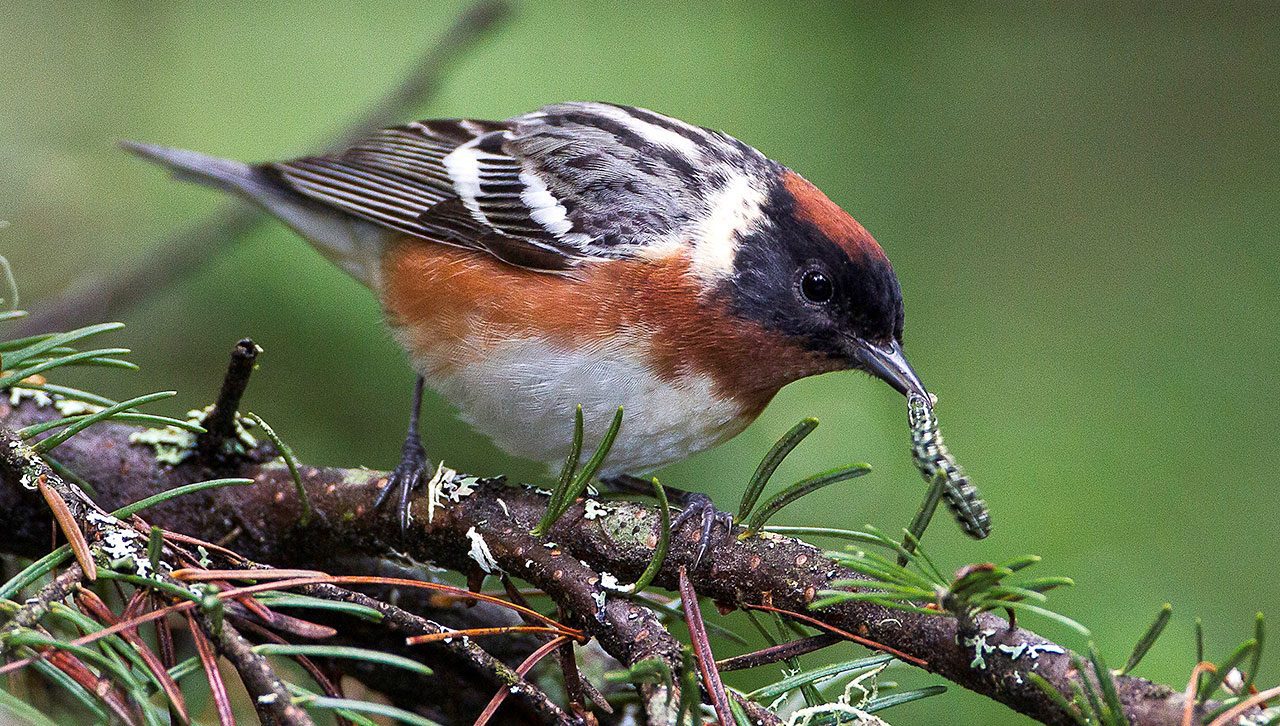
Pest Control
Avian control of insects that do damage to plants can have a large economic value. Birds can reduce the intensity of spruce budworm outbreaks and mitigate damage on spruce tree plantations comparable to effective insecticides. In Washington, avian control of spruce budworm was calculated to be worth at least $1,473 per square kilometer per year.
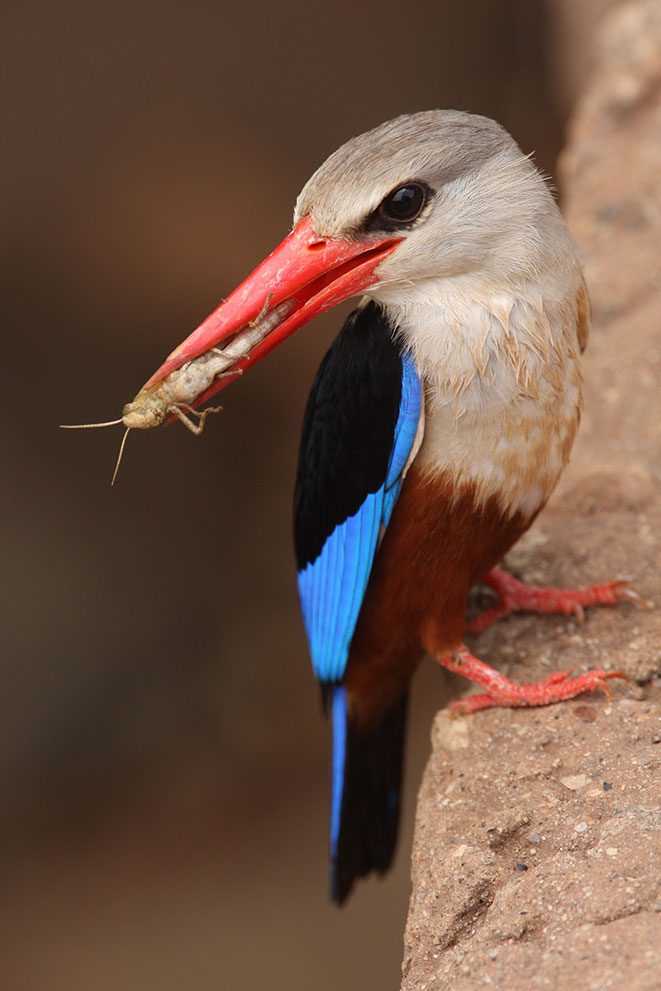
Insectivorous birds have been observed to reduce insect pest damage in various agricultural systems, such as apples, broccoli, cacao, coffee, corn, kale, grapes, and oil palm. For example, in Dutch apple plantations, researchers found that birds’ reduction of insect pest damage translated to a 66 percent increase in the yield of domestic apples. Similarly, researchers in Borneo estimated that bird pest control prevented 9 to 26 percent of the fruit loss in oil palm plantations. Matt Johnson and colleagues discovered that by reducing the damage caused by coffee berry borer beetles, birds in Jamaican coffee plantations increased coffee yield and farmers’ income by $310 per hectare.
We know less about birds of prey as pest control agents. But we do know that in its lifetime a Barn Owl may eat more than 11,000 mice that would have consumed 13 tons of crops. Field experiments in Israel with a trained Barn Owl revealed that the presence of an avian predator creates a “landscape of fear” that can significantly reduce seed consumption by small rodents. Owls have also been shown to control rat populations in various field crops, such as wheat, rice, and corn. In Malaysia, oil palm farmers put up Barn Owl nest boxes when local rodents developed resistance to the rodenticide warfarin. The switch to owls had the added benefit of population increases of other species that were being poisoned by warfarin, including mammalian predators, such as common palm civets and leopard cats.
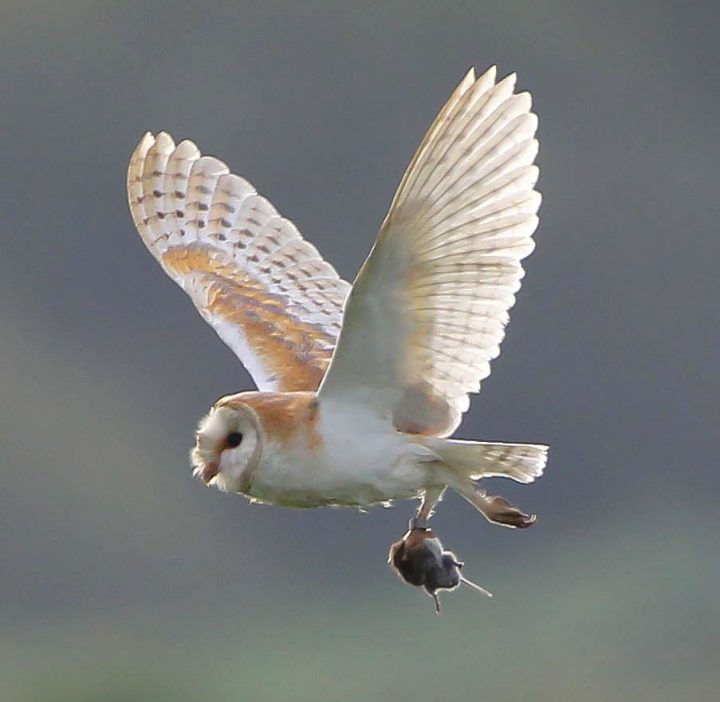
Birds can even be used to control the populations of other birds that are considered nuisances. In New Zealand, falcons in vineyards decreased the abundance of pest bird species and reduced grape loss by 95 percent. At airports, raptors can be especially important in keeping away birds that regularly collide with aircraft. The U.S. Air Force paid $200,000 per year for trained Peregrine Falcons to drive away European Starlings, Canada Geese, and other birds around the McGuire Air Force Base.
Any discussion of birds as pest-control agents should also mention that birds tend to be overestimated as pests themselves. Agricultural damage estimates by granivorous birds are often exaggerated. In surveys, farmers estimated they were losing an average of 25 percent of their crops to birds, due to subjective impressions based on the conspicuousness of large and localized bird flocks. But studies of damage to various crops, including cereal, corn, rice, and sorghum, by species such as Red-winged Blackbirds, Dickcissels, and Red-billed Queleas have shown that actual damage amounts to less than 1 percent of production.
Scavengers and Sanitary Services
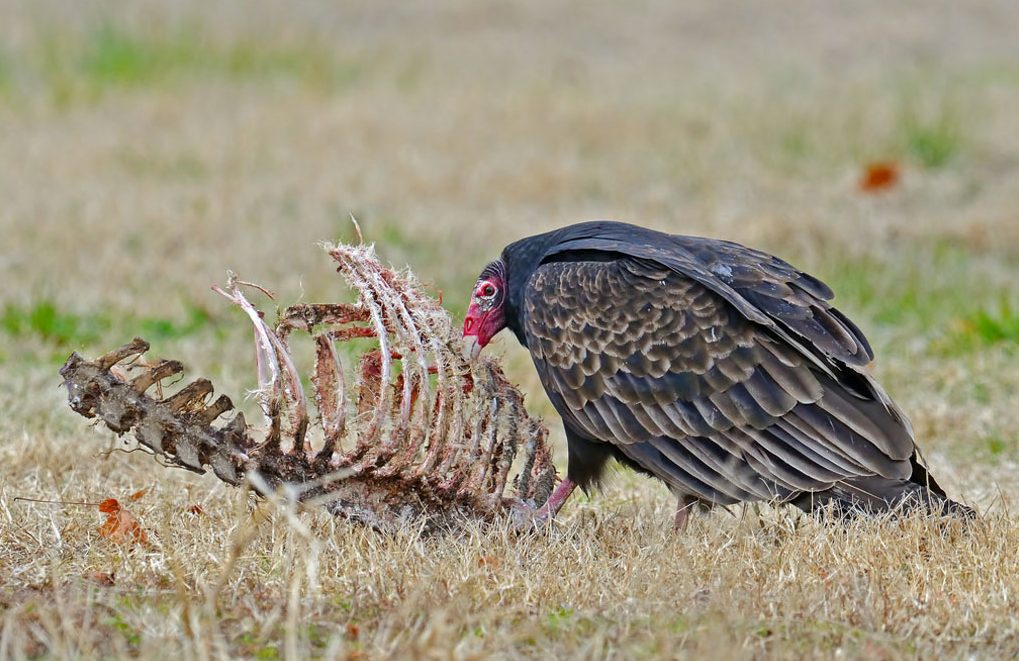
Carcass-removal services of vultures in Spain alone led to a minimum annual savings of about €1 million, because without vultures the carcasses of free-ranging livestock must be disposed of professionally. Vultures are particularly important in developing countries where sanitary waste programs may be limited or nonexistent. Vultures possess the ability to resist and possibly detoxify bacterial toxins in rotting flesh. Extremely acidic secretions of the vulture stomach kill all but the most resistant spores, reducing the pathogenic bacteria by consuming carcasses and thereby reducing disease.
Unfortunately, Old World vulture populations have drastically declined. In India, vulture populations crashed in the 1990s as vultures were poisoned while feeding on the carcasses of livestock that had been administered the veterinary drug diclofenac, which causes kidney failure in vultures. As vultures disappeared, there were increases in rotting animal carcasses. With fewer carcasses consumed by vultures, feral dog and rat numbers went up. At one Indian garbage dump, there was a 20-fold increase in the number of feral dogs.
The increase in these potential disease vectors led to an increase in rabies, and possibly caused the 1994 bubonic plague outbreak in western India that killed 54 people and cost India over $2 billion. Economist Anil Markandya and colleagues calculated that from 1992 to 2006 alone, the disappearance of vultures led to approximately 48,000 additional human rabies deaths and cost $34 billion to the Indian economy.
Even though diclofenac was banned for veterinary use in India and Pakistan, it was recently permitted by Tanzania. Thousands of African vultures die from eating poisoned carcasses, and now their populations are crashing in sub-Saharan Africa.
Losing Birds and Their Ecosystem Services
According to the IUCN Red List, 23 percent of the world’s birds are threatened or near-threatened with extinction, and 44 percent have declining populations. Bird extinctions and population reductions are already disrupting important ecosystem processes. Many bird species, such as Southern Cassowaries and Three-wattled Bellbirds, have irreplaceable roles as efficient dispersers of large-seeded plants.
The societal importance of ecosystem services is often appreciated only upon their loss. When introduced red foxes wiped out seabird colonies and their nutrient-rich guano from some Aleutian islands, the entire ecosystem changed from lush grassland to tundra. The loss of birds can change entire ecosystems.
Investments in understanding and preventing declines in populations of birds and other organisms will pay off, but only while we still have time to act.

All About Birds
is a free resource
Available for everyone,
funded by donors like you
American Kestrel by Blair Dudeck / Macaulay Library
